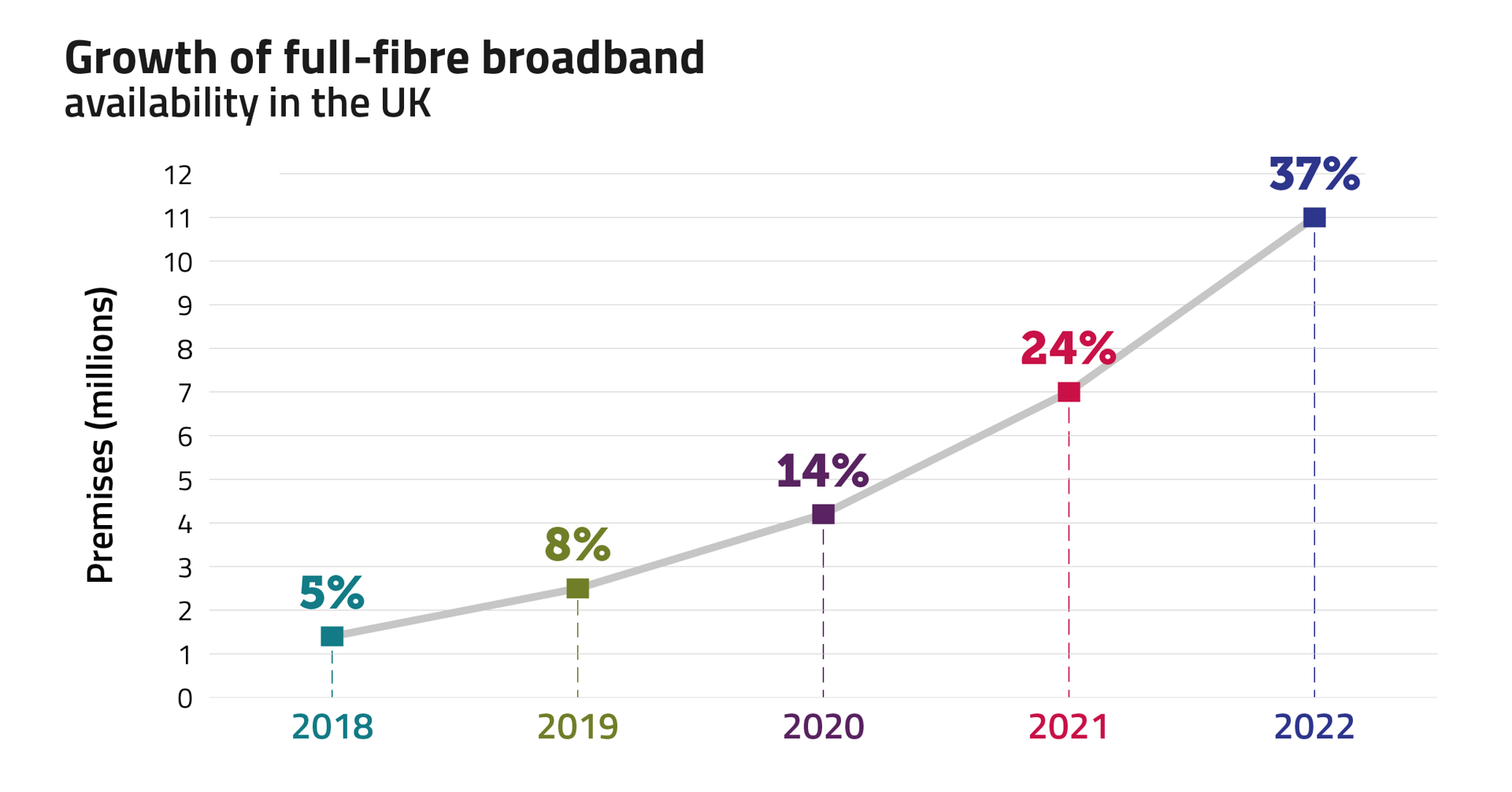
- Full-fibre broadband reaches 11 million UK households – up from 7 million a year ago
- As more small and medium-sized businesses shift towards hybrid working, better broadband becomes a priority
The roll-out of full-fibre broadband continues apace, as the number of UK homes with access to it jumps by more than 50% in a year, according to Ofcom’s latest research.
Ofcom’s Connected Nations autumn update reports that 37% of households can now get full fibre, which is more reliable and capable of delivering download speeds of up to 1 Gbit/s. That’s an increase from 24% a year ago, when just under seven million homes were covered.

The number of properties unable to get a ‘decent’ broadband speed (10 Mbit/s download and 1 Mbit/s upload) has fallen by 38% since last year to 83,000.
Of these, around 66,000 are not expected to be covered by a publicly-funded roll-out scheme in the next twelve months, and therefore may be eligible for the broadband universal service.
SMEs shift to hybrid working
Ofcom has also today published research on how small- and medium-sized enterprises (SMEs) are using communications services.
We found that the pandemic has accelerated a shift towards hybrid working for businesses with between 10 and 250 employees, making home broadband more of a priority.
Around a third of SMEs (31%) with a broadband connection think it has become even more important since the start of the pandemic.
A quarter of SMEs have switched a communications service in the last two years, with a cheaper deal being the main reason for doing so, while those that don’t switch cite high satisfaction with their current provider as a reason for staying put.
For the majority of SMEs, the communications market is meeting their needs. However, rural SMEs are four times more likely to be very dissatisfied with mobile reception than their urban counterparts (12% vs. 3%) and twice as likely to be dissatisfied with the reliability of their internet service (15% vs. 8%).
Notes to editors
Methodologies:
- Connected Nations autumn update: Data from 58 fixed line operators and 26 Fixed Wireless Access providers (Wireless Internet Service Providers and Mobile Network Operators) was used to compile availability figures as of May 2022.
- SME research: 2,109 decision makers at SMEs were interviewed 28 January – 4 April 2022.
